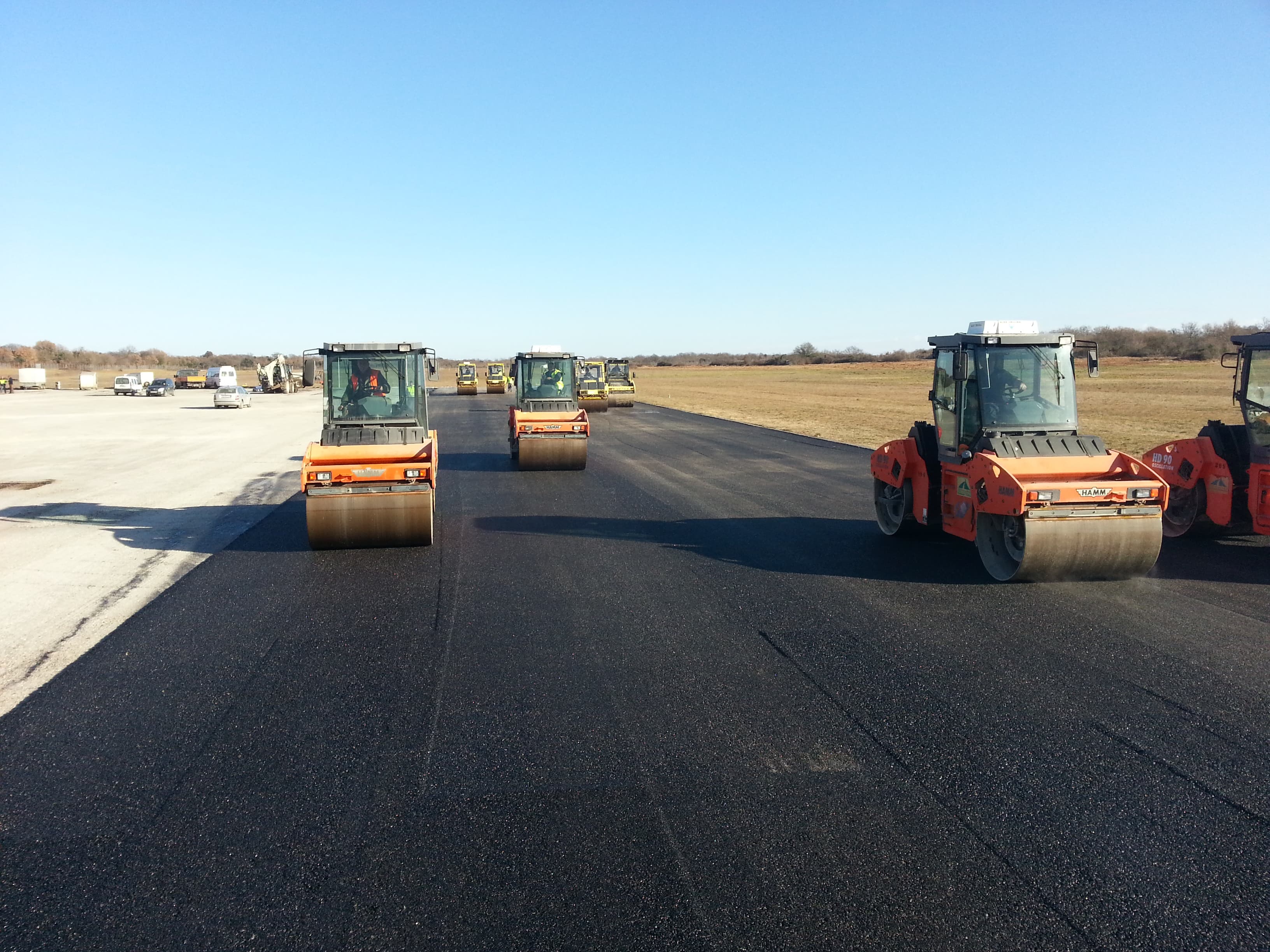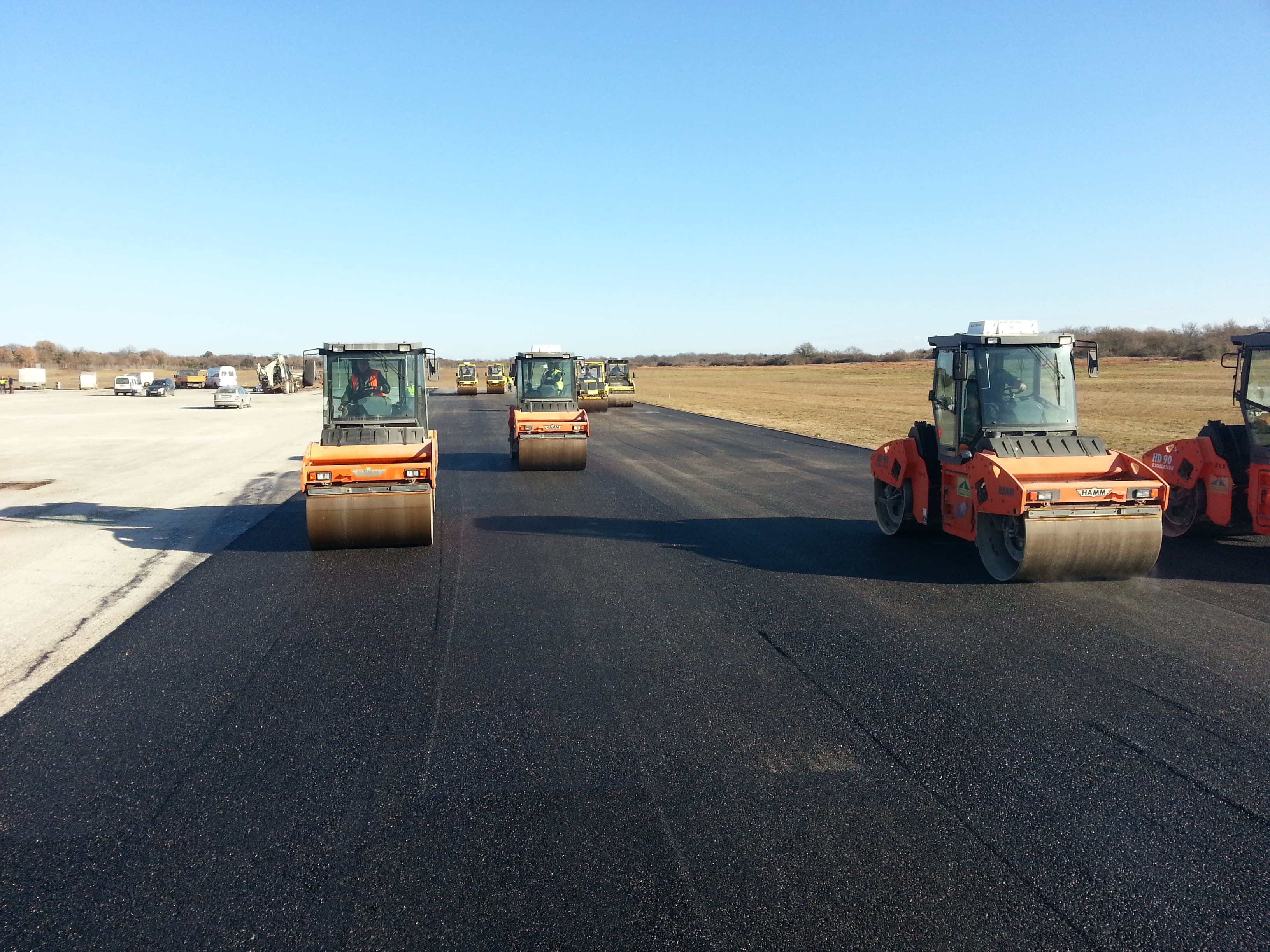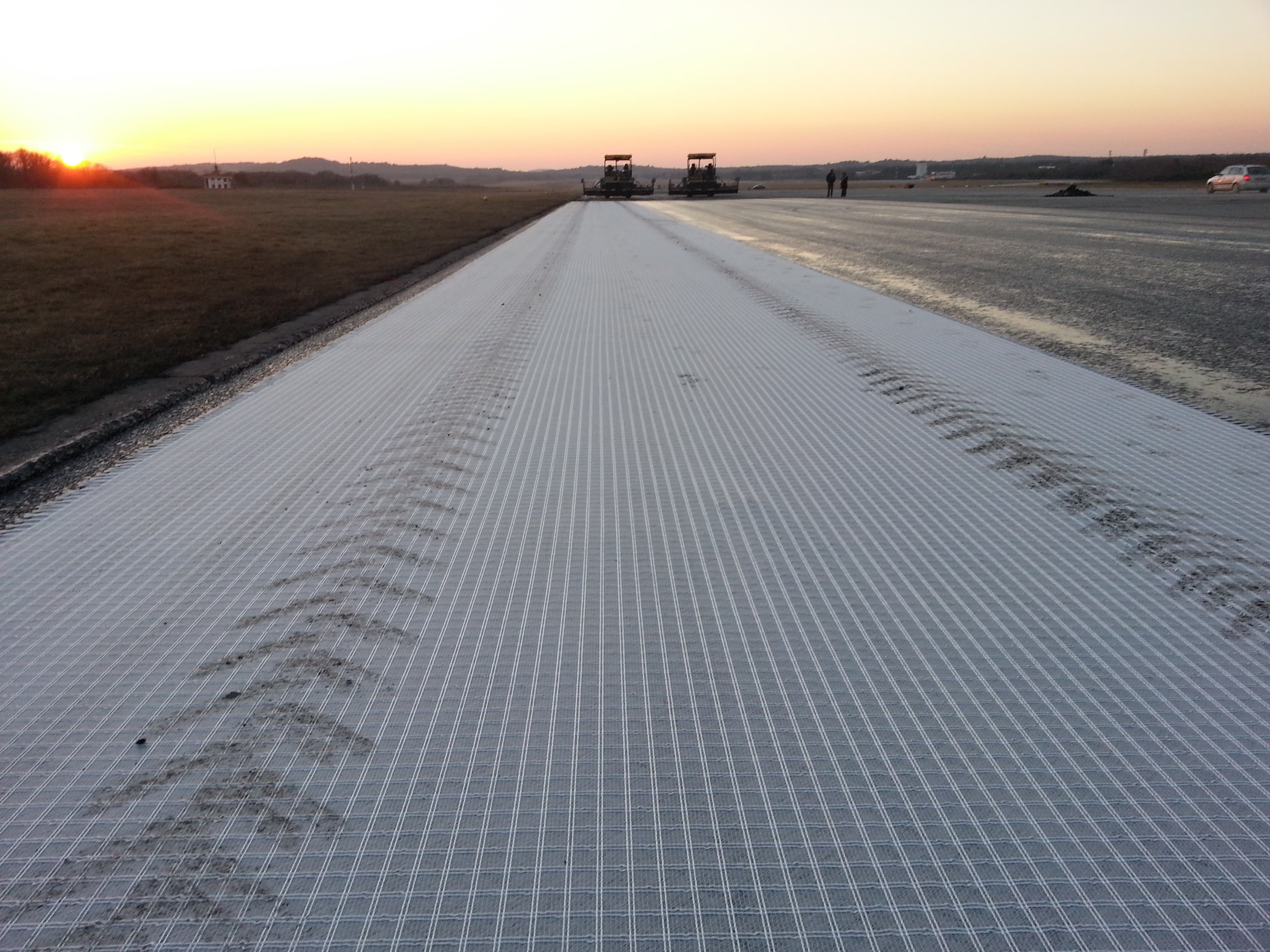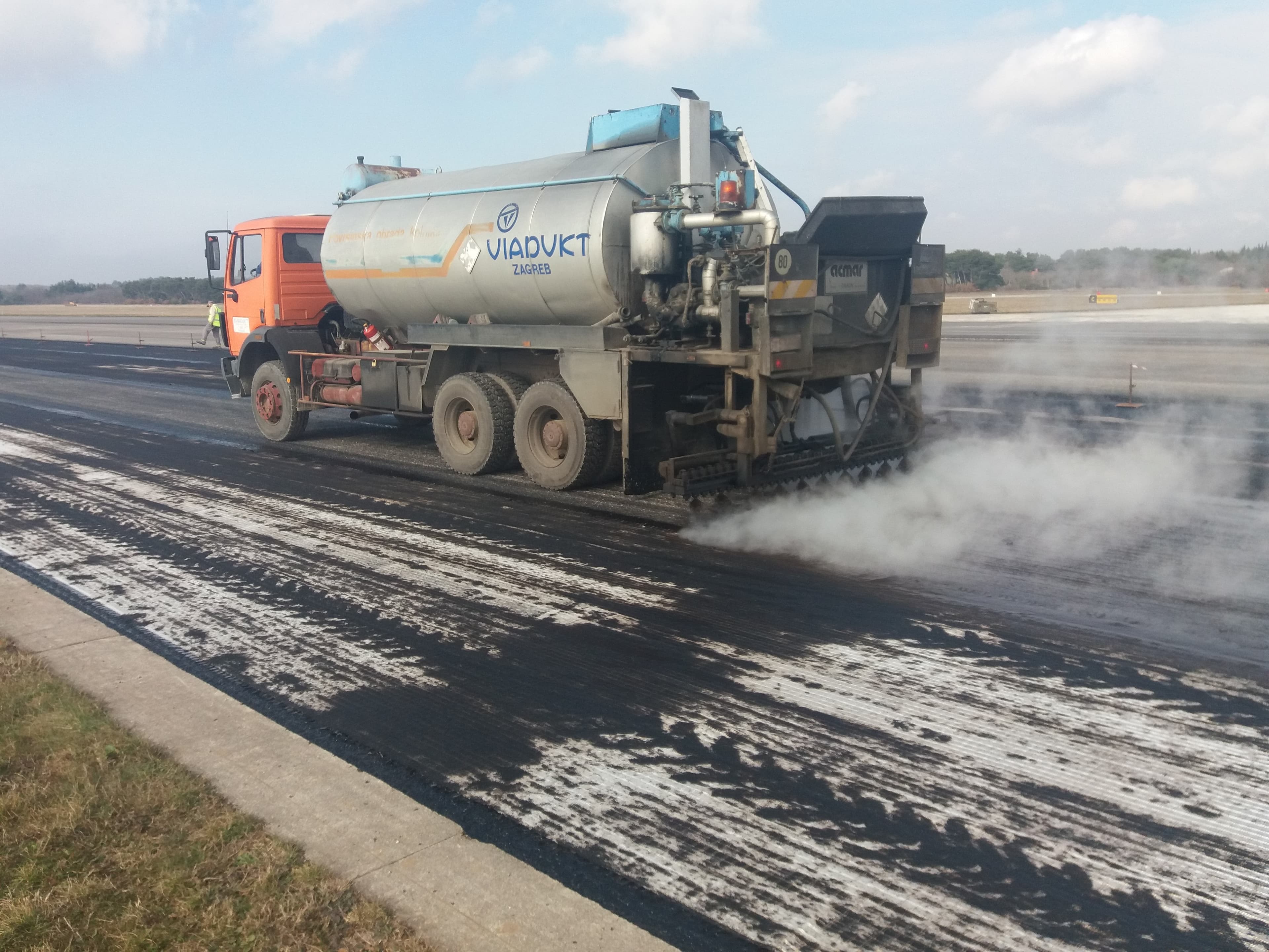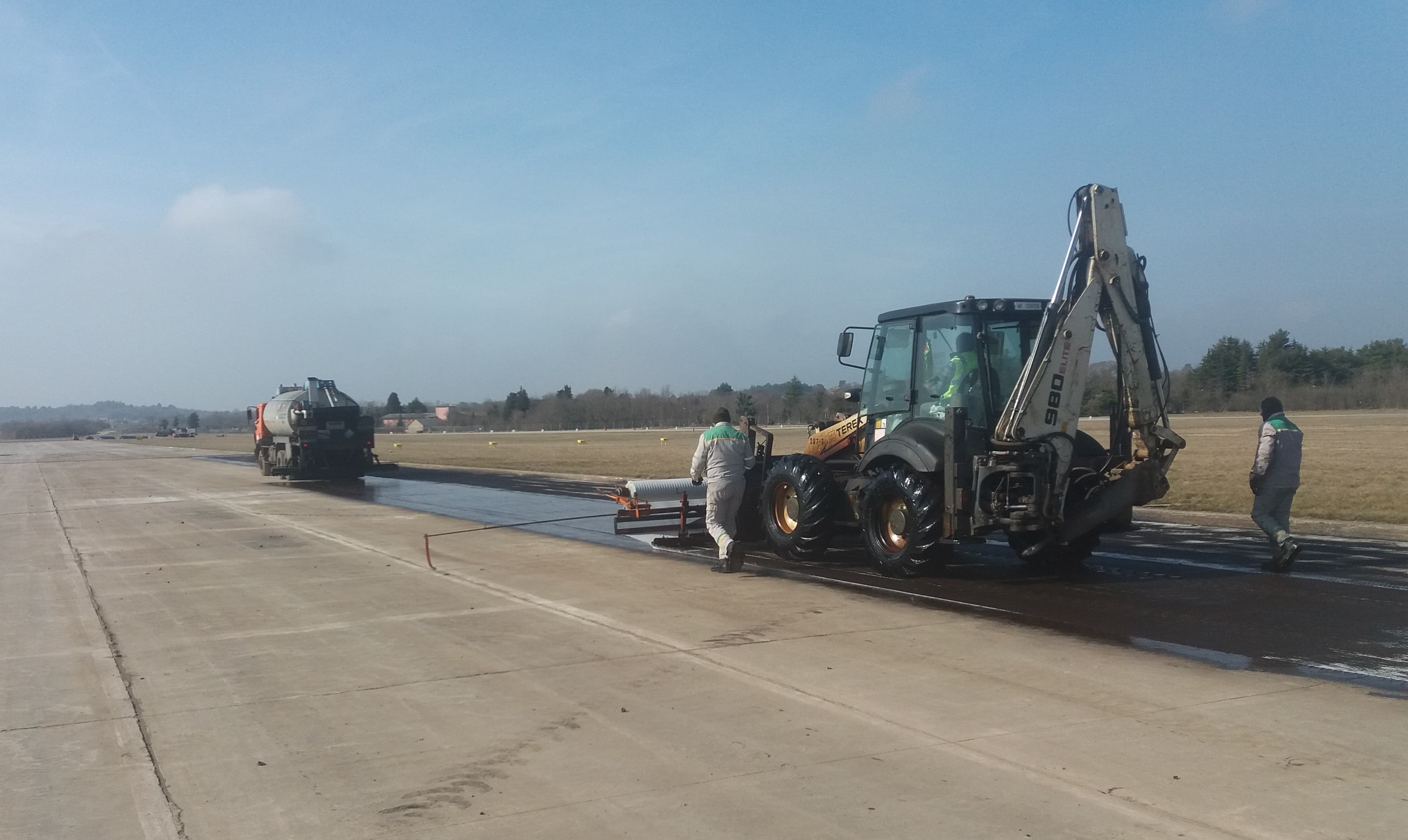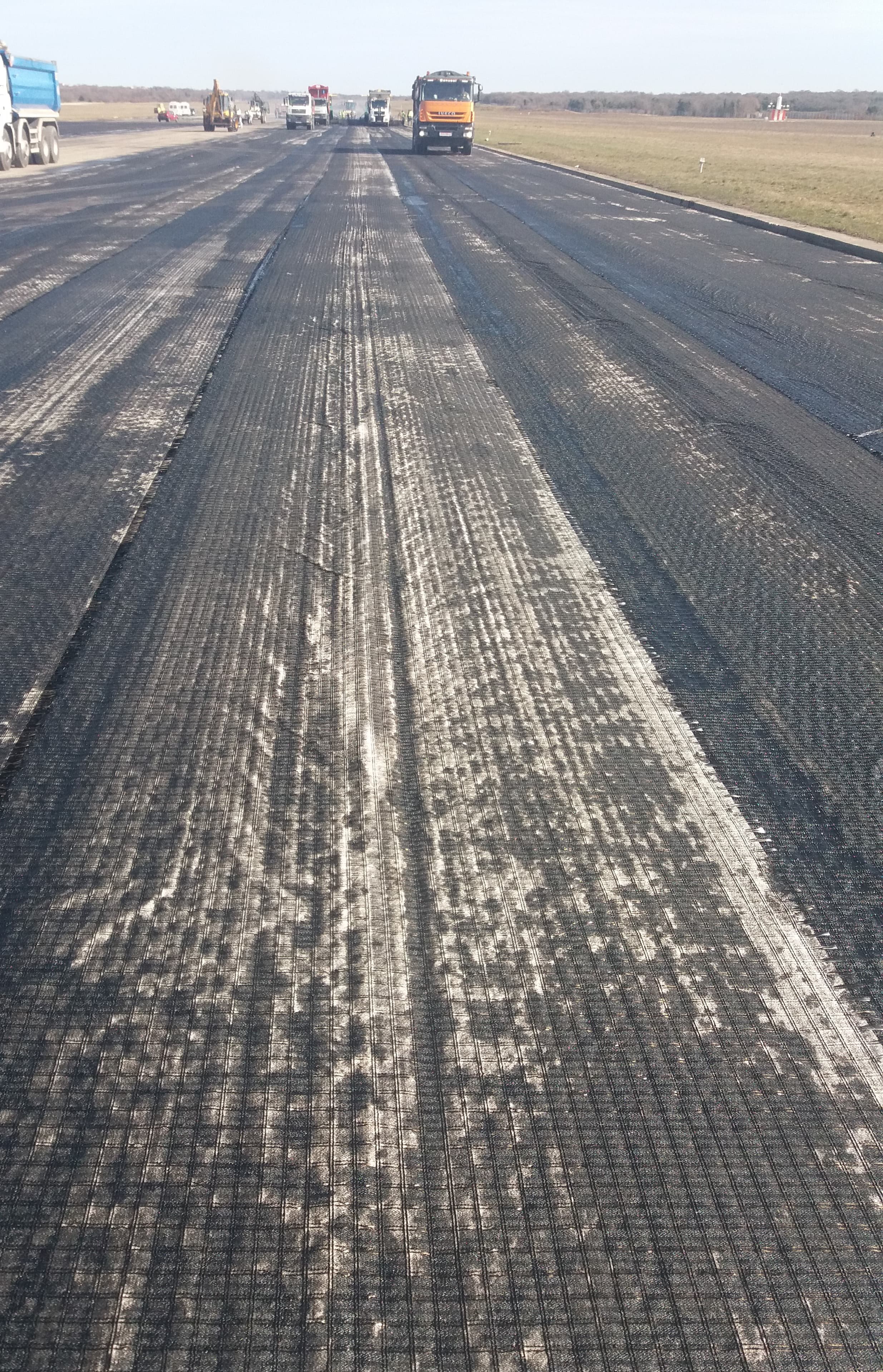Overview
Airport runways must meet strict quality and safety standards. Cracks and uneven surfaces can create hazardous conditions for take-off and landing. The surface of Pula airport had deteriorated after many years of use. The original runway was built in 1954 with a concrete-slab surface, which was later covered with three layers of asphalt in 1972. Additionally, an asphalt structure of 650 m (2,132 ft) in length was added. The total length of the runway is 3 km (1.86 mi). Over time, cracks appeared due to increased loading operations and severe weather conditions. Natural bitumen aging (oxidation) also occurred. In response, authorities initiated a surface rehabilitation program using the reliable and technically sound method of applying MIRAGRID® PGM-G. The decision to use this product was based on its reliability, positive past experiences, and excellent cost-benefit ratio.
Challenge
The rehabilitation process involved removing approximately 10 cm (3.94 in) of the existing asphalt through milling. A bitumen emulsion C 60 BPZ, conforming to EN 13808, was sprayed as a tack coat at a rate of 1.4 kg/m² (0.29 lb/ft²). MIRAGRID PGM-G 60/60 E was laid in the broken emulsion, followed by the installation of two layers of asphalt: 6 cm (2.36 in) of AC 22 base 45/80-65 and 4.5 cm (1.77 in) of AC16 surf 45/80-65, conforming to EN 13108. The bitumen amount, grading, voids content, and Marshall stability of the mixtures were continuously tested. Drilling cores were taken from the paved layers to test thickness, compaction, resistance to plastic deformation, and bond strength. Evenness was measured using IRI, and skid resistance was measured using SRT.
Solution
As Pula is a popular tourist destination, the airport experiences high traffic during the summer. Therefore, the construction work had to be completed during the winter months. CESTA d.o.o from Pula, one of the Croatian asphalt works specialists, was responsible for the execution. The project involved managing the supply and installation of 20,000 tons (22,046,226 lb) of AC 22, 15,000 tons (16,535,384 lb) of AC 22, and 160,000 m² (1,722,225 ft²) of MIRAGRID PGM-G within a six-week timeframe. The experience of the contractor and the two installation devices provided by TenCate made it possible to achieve this ambitious plan.
MIRAGRID PGM-G 60/60 is a mechanically bonded PP nonwoven with a grid of fiberglass yarns known for its high tensile strength. It fully complies with the requirements of EN 15381, combining the stress-relief (STR), Barrier (B), and Reinforcement (R) functions into one product. MIRAGRID PGM-G effectively prevents crack formation and extends the pavement's service life, as demonstrated once again at Pula airport.
